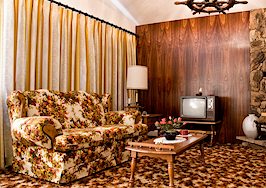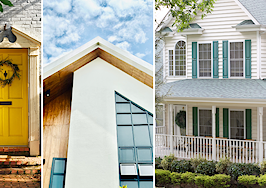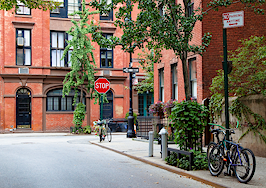Looking for more new agent advice? Sign up for The Basics, a weekly newsletter with everything you need to launch your real estate business.
American housing styles have changed, and continue to change, throughout the country and as homeowners’ tastes and lifestyles have evolved. As the country has undergone industrial and economic changes, both good and not so good, housing styles have adapted out of necessity.
In this new series, I will walk you through the predominant housing styles of the past 12 decades, beginning in 1900. A basic understanding of each architectural style that defines a decade will position you as a knowledgeable agent with your clients and make searching for a home with your buyers easier for everyone.
As the century turned from 1990 to the year 2000, homes became more sustainable and energy-efficient. Homebuyers who are shopping for newer homes built in the last two decades have expectations of high performance from their new home, including energy efficiency resulting from high-performance windows, better insulation and solar panels.
Buyers of newer homes will be sensitive to the land surrounding the house and the landscaping, as well as the design and structure of the building. Native grasses and trees in the surrounding landscape will aid in water efficiency while requiring less maintenance than plants that are not indigenous.
Everything old is new again
Two styles stand out as the most desired for the 2000s: Modern Farmhouse and Mid-Century Modern Ranch. Whether due to the aging population’s desire for nostalgia or the need for a simpler, more honest lifestyle, these two styles have consistently proven to be the most desired.
Prior to the year 2000 television did not influence homebuyers’ tastes and desires. The popularity of home makeover programs provided renovation ideas that shaped buyers’ tastes and goals. The farmhouse style includes a front porch that is inviting and acts as a transition space from the outdoors to the home’s interior.
In pleasant weather, the front porch, part of the classic American housing vernacular, provides extra living space and a spot for plants. Originally, the farmhouse’s front porch served as a space to remove muddy boots and sit and relax before entering the house.
Upon entering the farmhouse, the room immediately inside was a formal parlor, leading to the large kitchen and stairway to the bedrooms at the rear of the house. Today’s lifestyle supports the large eat-in kitchen and gathering area, as did the farmhouse.
Design features support an aging-in-place population
Mid-century ranches, built on a slab with minimal or no stairs, are accessible to America’s aging population, who often prefer single-story living.
Multilevel housing of the 2000s may feature a first-floor primary bedroom with an ensuite bathroom that includes a shower that is flush to the floor, without a ledge or tripping hazard. Some first-floor bathrooms near bedrooms may feature walk-in bathtubs, providing easy access for aging-in-place homeowners.
Elevators may also be a feature of housing built in the 2000s. While stairs are also included in the floorplan, the elevator provides a future option, should the homeowner wish to age in place.
Elevators require backup generators, in the event of power outages, and sellers should be able to provide evidence of the generator’s existence. Elevators should also have a service contract in place that a homebuyer will want to see.
Green living design options are increasingly important
Green and zero-energy houses also began to appear in the 2000s. Reduced carbon emissions, sustainable materials and eco-friendly materials are all features of houses from this period. Tin roofs, often found on farmhouses, have a lifespan of 70 years in contrast to asphalt shingles which can begin to deteriorate after 20 years.
“Net-zero” is a term that came into use with houses from this period. Net-zero means that the total amount of energy that the house uses annually is equal to the energy the house produces annually.
The owner/seller of a net-zero house will be sure to point out its many features, such as solar panels and the orientation of the building on site to take advantage of climate, sun, wind and rain patterns. High-efficiency appliances, low-energy HVAC systems, and air sealing and insulation to prevent heated or cooled air from entering or escaping the building are other features of zero-energy homes.
Home entertainment and gathering spaces grow in popularity
Large home entertainment centers and home theaters continued to be featured well into the 2000s. Skylights which helped to bring natural light inside, reducing electric bills, are another feature from this period.
Electric or gas fireplaces held a strong appeal through this timeframe, providing both an auxiliary heat source and the visual appeal of warmth. Outdoor firepits as both a gathering place and a warming feature became commonplace in the 2000s.
Our homes define us as well as provide us shelter. As the American population ages and develops new needs, our houses adjust to meet our needs.
Realtors who understand and can discuss the features of houses from each time period will provide their buyers and sellers with the knowledge that will enable them to make the best decision when purchasing or selling a property. Realtors who can provide knowledge and act as guides will always succeed.
Gerard Splendore is a licensed associate real estate broker with Warburg Realty in New York. Connect with him on LinkedIn.













